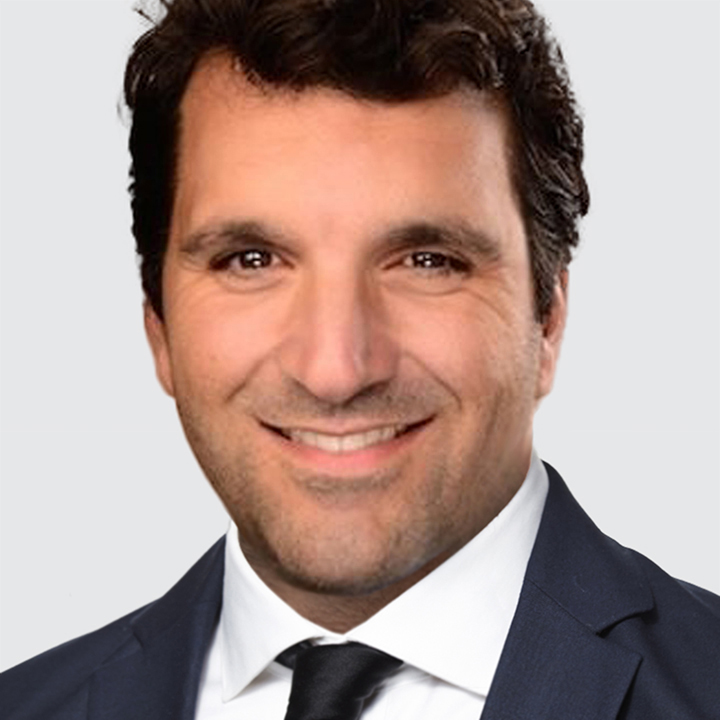- Resilient US economic data will keep the Fed cautious on easing. USD can find near-term support, but downtrend holds.
- ECB to keep the policy rate unchanged at 2.00%. Hungary’s central bank to stand pat while Turkey expected to slash rates.
- July PMIs for major economies will offer a timely update on growth momentum.
Please note: Charts are only accessible via our email distribution list. Send me your email to get full acess.
Yield Gap Says Stronger Dollar, Market Waits for Simon
USD extended its July recovery against most major currencies last week. USD will likely remain supported this week as the latest set of US economic data suggests the Fed will not be in a rush to resume easing. In June, retail sales overshot expectations and progress towards the Fed’s 2% inflation goal stalled. Additionally, lower jobless claims for the BLS survey week ending July 12 point to solid non-farm payrolls gains in July and on Thursday, the US July S&P Global PMI is projected to show stable growth momentum.
Nonetheless, the year-to-date USD downtrend is intact in our view. USD should be trading much higher based on rate differentials alone. The gap likely reflects three persistent drags on USD:
(i) US economy still faces risk of entering a period of stagflation. We expect the effects of tariffs on growth and inflation to materialize over the second half of the year. The average effective US tariff rate is estimated at 20.6% as of July 14, the highest since 1910. But actual tariffs in effect in recent months are so far much smaller at about 8% in May, up from 2.4% in January.
(ii) Political pressure to lower the funds rate. All three leading candidates (Kevin Warsh, Kevin Hassett, Christopher Waller) to succeed Fed Chair Jay Powell have argued for lower interest rates right now. Moreover, markets may soon have to contend with a “shadow” Fed chair, if President Donald Trump signals his pick months ahead of Powell’s May 2026 term end.
(iii) The Trump administration’s implicit support for a weaker dollar. A core goal of the administration is to boost US manufacturing competitiveness, which could help narrow the trade deficit. Effort to shrink the trade deficit means fewer dollars will flow overseas, reducing the need for those funds to be recycled back into US securities.
ECB Poised to Hit Snooze
The ECB is expected to keep the policy rate unchanged at 2.00% on Thursday. The swaps markets virtually rule-out odds of a July rate cut and price in just one 25bps cut over the next 12 months. There are no new economic projections associated with this policy-setting meeting. The next set of forecasts are due in September.
In our view, the bar for more ECB cuts is high. First, services inflation (3.3% y/y in June) still has some distance to travel to make sure that inflation stabilizes at the target on a sustainable basis. Second, leading indicators (July PMI and IFO, both due Thursday) suggest a fragile recovery in economic activity is underway. Bottom line: EUR/USD will likely carve-out a bottom around 1.1500 in part because the ECB is close to wrapping-up easing.
UK Economy: Caught Between Sluggish Growth and Sticky Prices
The UK July composite PMI (Thursday) is expected to show growth traction slowing while June retail sales volume (Friday) is anticipated to recover after plunging in May. The Bank of England (BOE) forecasts modest consumption growth of 0.2% q/q in Q2 supported by positive real wage growth. But higher household savings means spending activity will likely remain subdued.
Meanwhile, UK services CPI inflation ran hot in June, printing for a second straight month at 4.7% y/y (consensus: 4.5%, BOE projection: 4.6%). This suggests the Bank of England (BOE) has limited room to dial-up easing to support growth. Bottom line: the combination of high UK underlying inflation and a sluggish growth outlook spell trouble for GBP, especially versus EUR.
BOC and RBNZ Near the Finish Line, RBA Still Has Work to Do
The Bank of Canada (BOC) is nearly done easing. Canada underlying inflation is sticky well above its 2% target and the June labor force survey was very strong. However, further weakness in the BOC’s Business Outlook Survey indicator over Q2 (Monday) can keep rate cut bets alive and weigh on CAD. The swaps curve implies less than 10% odds of a 25bps cut at the next July 30 meeting and 60% odds of a final 25bps cut in the next 12 months.
At its last meeting July 8, the RBNZ kept the Official Cash Rate (OCR) unchanged at 3.25%, as was largely anticipated, and noted that “If medium-term inflation pressures continue to ease as projected, the Committee expects to lower the Official Cash Rate further.” As such, New Zealand’s Q2 CPI print (Sunday) will be a key driver of near-term RBNZ rate expectations. The RBNZ sees headline CPI at 0.5% q/q vs. 0.9% in Q1 or 2.6% y/y vs. 2.5% in Q1.
In our view, the RBNZ is near the end of its easing cycle, which is supportive of NZD. New Zealand inflation is within the target band and the OCR is close to the RBNZ mid-point estimate of the neutral range between 2% and 4%. The swaps market price-in 35bps of cuts over the next 12 months and the policy rate to bottom between 2.75% and 3.00%.
RBA looks set to resume easing on August 12. Australia’s weak June labor force report challenges the RBA’s view that “labour market conditions remain tight.” On Wednesday, RBA Governor Michele Bullock will have an opportunity to recalibrate the RBA’s message when she speaks at the annual Anika Foundation event. If so, AUD risk underperforming CAD and NZD.
Meanwhile, the RBA Minutes of the July 8 policy meeting (Monday) will shed light on the rationale behind the unexpected decision to keep rates on hold at 3.85%. At the time, the swaps market had virtually fully priced-in a 25bps cut. Instead, the RBA noted that “it could wait for a little more information to confirm that inflation remains on track to reach 2.5 per cent on a sustainable basis.” Australia’s Q2 CPI print is due July 29.
Hungary to Keep Cool, While Turkey Takes the Knife to Rates
National Bank of Hungary is widely expected to keep rates steady at 6.50% (Tuesday). At the last June 24 meeting, the bank decided unanimously to leave the base rate unchanged at 6.50%, marking the 9th consecutive hold since cutting rates 25bps in September 2024.
The bank showed no signs of departing from its hold stance warning that “For the rest of the year, inflation is expected to stay above the central bank tolerance band [3% +/-1%]” The swaps market continues to price in 50bps of easing over the next twelve months. Regardless, Hungary’s positive real interest rates and current account surplus (1.7% of GDP in Q1) will continue to underpin HUF.
Turkey central bank is expected to resume easing and cut rates 250bps to 43.50% (Thursday). The risk is the bank keeps rates on hold for a second consecutive time because the lira remains under downside pressure and the decline in Turkey core inflation stalled in June. Over the next six and twelve months, the swaps market is pricing in 10 and 16 percentage points of total easing, respectively.




